Why infrared? (nebula edition)
- By Maggie Masetti
- August 16, 2013
- 2 Comments
As someone who fields a lot of questions about the James Webb Space Telescope, a giant infrared observatory being built right now, I see a lot of “Why infrared?” questions.
There are a lot of answers to this, but here’s one I think is particularly interesting and illustrative of why infrared light is a valuable tool for understanding the universe. And that is – without the use of infrared telescopes it’s really, really hard to see stars being born.
Stars are born inside thick clouds of dust. These clouds, or nebulae, are actually quite pretty. Here’s a really famous image of a beautiful nebula taken by the Hubble Space Telescope that you may recognize:

Pillars of Creation, Credit: NASA, Jeff Hester, and Paul Scowen (Arizona State University)
While this image is spectacular, the problem is – there are stars inside those pillars of dust that Hubble can’t see. And that’s because the visible light being given out by those stars is being obscured by the dust. BUT, what if we used a telescope sensitive to infrared light to look at this nebula?
Here’s Herschel’s far-infrared view:
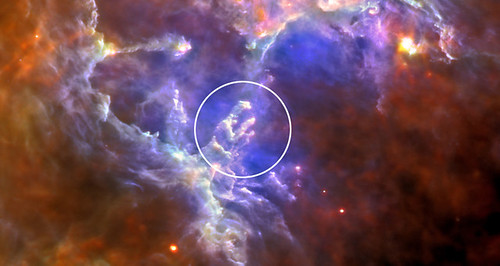
Credit: ESA/Herschel/PACS/SPIRE/Hill, Motte, HOBYS Key Programme Consortium
And here is a comparison of the Hubble image with one taken by NASA Spitzer:
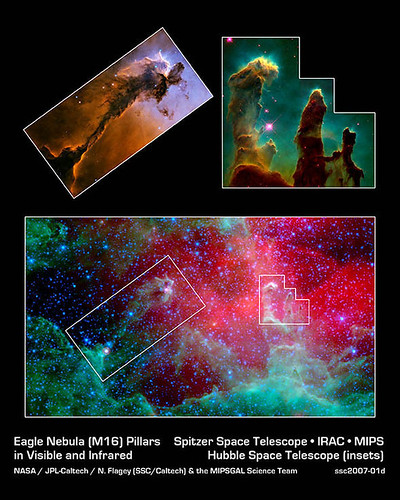
Credit: NASA/JPL-Caltech/Institut d’Astrophysique Spatiale
And the brand new near-infrared Hubble view (added January 2014):
Being able to see in the infrared reveals more structure to the dust clouds and hidden stars have now become apparent. And if Hubble can take an infrared image like this, imagine what JWST, which is 100x more powerful than Hubble, will do!
How about the “Mystic Mountains” of the Carina Nebula? Hubble, as shown above, has some infrared capability, so compare these two images, one in infrared and one in visible light:
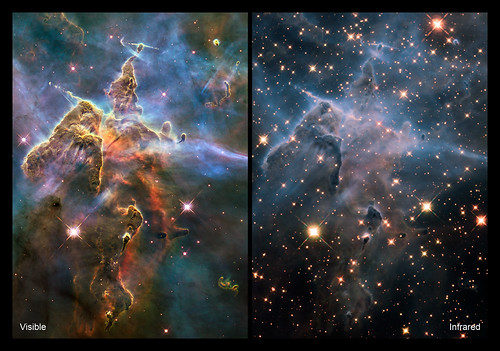
Credit:NASA/ESA/M. Livio & Hubble 20th Anniversary Team (STScI)
Quite a difference – and lots more stars are visible that weren’t before.
So how does this work? Well, let’s try this little thought experiment. What if you were to put your arm into a garbage bag?

Credit: NASA/IPAC
Your arm is hidden. Invisible.
BUT, what if you looked at your arm and the garbage bag with an infrared camera? Remember that infrared light is essentially heat. And that while your eyes may not be able to pick up the warmth of your arm underneath the cooler plastic of the bag, an infrared camera can. An infrared camera can see right through the bag!

Credit: NASA/IPAC
And this is how the infrared telescope works as well. It sees the heat or infrared light being emitted by the stars within the cooler dust clouds.
Here’s one more famous comparison for you. The gorgeous Horsehead Nebula:
Visible light:

Credit: NASA
And the recently released Hubble image showing the Horsehead in infrared light:
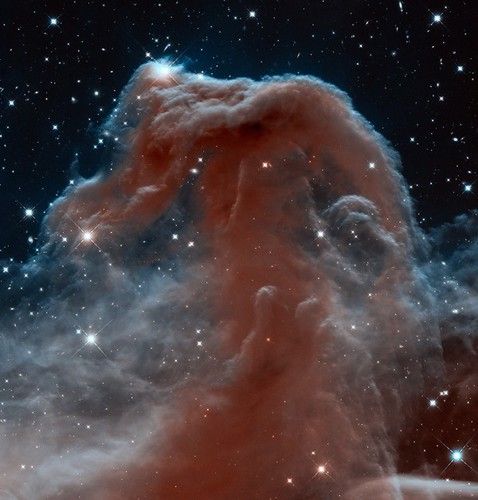
Credit: NASA/Space Telescope Science Institute (STScI)
So, that’s why infrared! And just one reason why a super powerful infrared observatory (like JWST) will be able reveal more of the hidden secrets of the places where stars are born.


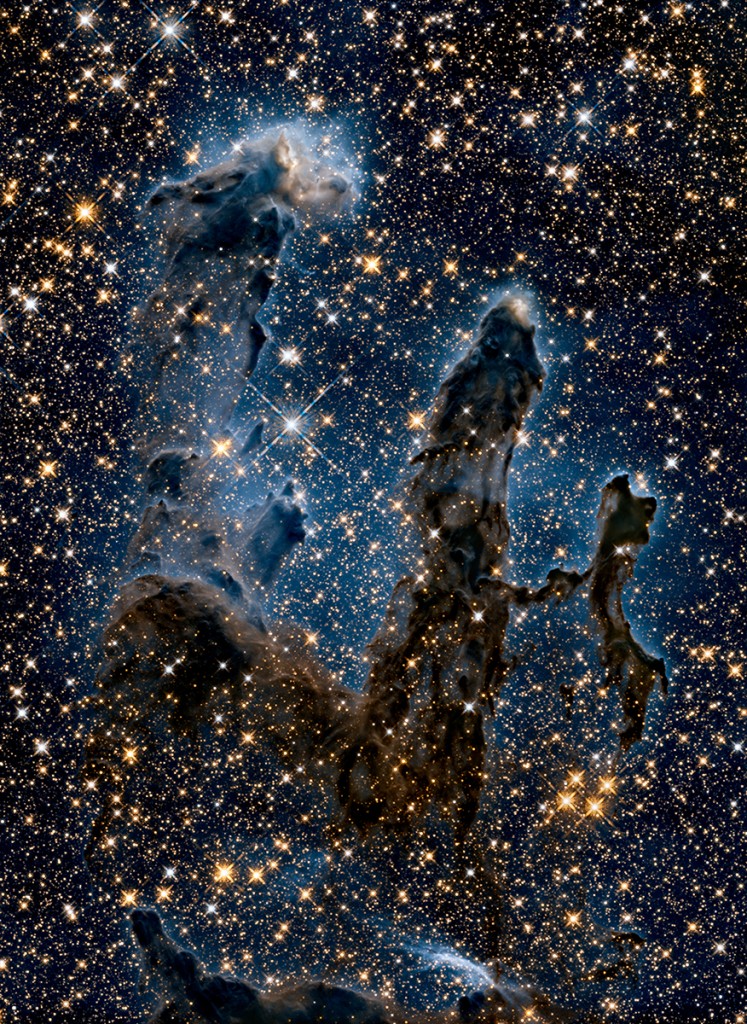

If IR reads heat signature as explained here, then why not use a thermal camera, reading thermal signatures ? Unless thermal cameras would require bigger lenses and heavier hardware that are not viable options for even the James Webb telescope ?
Is it possible that we are trying to convert the image of these galaxies and stars to accommodate the spectral span of the human eye ? Since we cant see very much of these galaxies within the usual .4 to .7 um spectrum of RGB we extend that spectrum to the IR range to see a little more ? Can we extend some more perhaps with thermal imagery to cut through the dust and haze ?
That’s actually exactly what JWST (and Spitzer and Herschel) are doing. They do have cameras and instruments that are sensitive to infrared light and can “read” the heat signatures of far off stars and galaxies. Heat (or thermal signatures) is the same thing as infrared light.
I’m unclear what you mean by “converting” the image to the “spectral span” of the human eye. But whether it be Hubble or Spitzer or James Webb, the images don’t come from these telescopes looking like images you took on your digital camera. They all require some processing to make the data meaningful and easy for the human eye to interpret. This goes for infrared images as well.
Here’s a good site on how Hubble images are made: http://hubblesite.org/gallery/behind_the_pictures/meaning_of_color/
These pages do a nice job summarizing how IR is used for both earth and space science.
http://missionscience.nasa.gov/ems/07_infraredwaves.html
http://missionscience.nasa.gov/ems/08_nearinfraredwaves.html